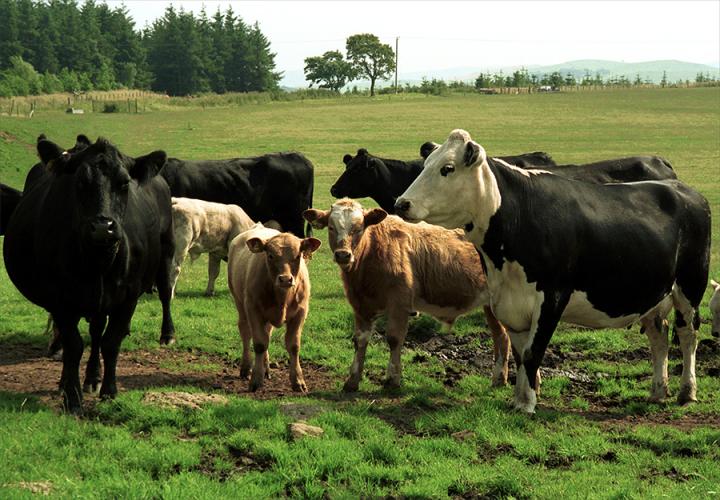Genetic clues of TB spread revealed
Tuberculosis in cattle and badgers passes between members of the same species at least twice as often than between cow and badger.

Disease spread within badger populations and within cattle herds happens at least twice as frequently as transmission from one species to the other, according to a study at a site where infections occur frequently.
Researchers analysing genetic data from the bacteria that causes the disease also found that cattle are approximately ten times more likely to catch tuberculosis (TB) from badgers than badgers are to catch it from cattle.
Scientists say the findings of the research – which was conducted in Gloucestershire over a 15-year period – could improve control strategies, reduce disease transmission and cut associated costs.
Transmission
Bovine TB is an infectious respiratory disease of cattle that is mainly spread through inhaling infectious particles in the air. It is caused by the bacterium Mycobacterium bovis, which can also infect and cause disease in other mammals, including humans, deer, goats, pigs, cats and dogs.
Using data from an undisturbed population of badgers in Woodchester Park in Gloucestershire and nearby cattle farms, this study provides the first direct evidence of transmission between badgers and cattle. It is an area where tuberculosis is known to occur frequently in both cattle and badgers.
Genetic study
The researchers analysed the entire genetic make-up of the bacteria from 230 badgers and 189 cattle, a process known as whole genome sequencing.
They combined this with detailed information on where the cattle and badgers lived, when they were infected, and whether they could have had contact with one another.
Scientists were then able to estimate how often the two species spread TB. They found that badgers play an important role in the maintenance of the disease in this area.
The work was led by experts from the Roslin Institute, with collaborators from institutions including the Animal and Plant Health Agency, the University of Glasgow and University College Dublin.
Control strategies
Current approaches to controlling bovine tuberculosis only discriminate at a very coarse, regional level between areas where badgers are more likely to be involved in infecting cattle from areas where they are not. This work identifies genetic signatures that could guide the interpretation of similar data if collected in other, less-intensively studied areas.
This would allow for a more targeted control of tuberculosis in cattle and badgers, aiding efforts to control the disease and reduce the impact on the badger population.
The study, published in the journal eLife, was funded by the Biotechnology and Biological Sciences Research Council, Defra and the Wellcome Trust.
Contact
Shane Canning, Press and PR Office, 0755 782 0266, shane.canning@ed.ac.uk
Related links
Breeding for tuberculosis resistant cattle
Propensity to transmit diseases depends on genes
About the Royal Dick School of Veterinary Studies
The Royal (Dick) School of Veterinary Studies is a one-of-a-kind centre of excellence in clinical activity, teaching and research. Our purpose-built campus, set against the backdrop of the beautiful Pentland Hills Regional Park, is home to more than eight hundred staff and almost fourteen hundred students, all of whom contribute to our exceptional community ethos.
The School comprises:
- The Roslin Institute
- The Global Academy of Agriculture and Food Security
- The Roslin Innovation Centre
- The Hospital for Small Animals
- Equine Veterinary Services
- Farm Animal Services
- Easter Bush Pathology
- The Jeanne Marchig International Centre for Animal Welfare Education
We represent the largest concentration of animal science related expertise in Europe, impacting local, regional, national and international communities in terms of economic growth, the provision of clinical services and the advancement of scientific knowledge.


